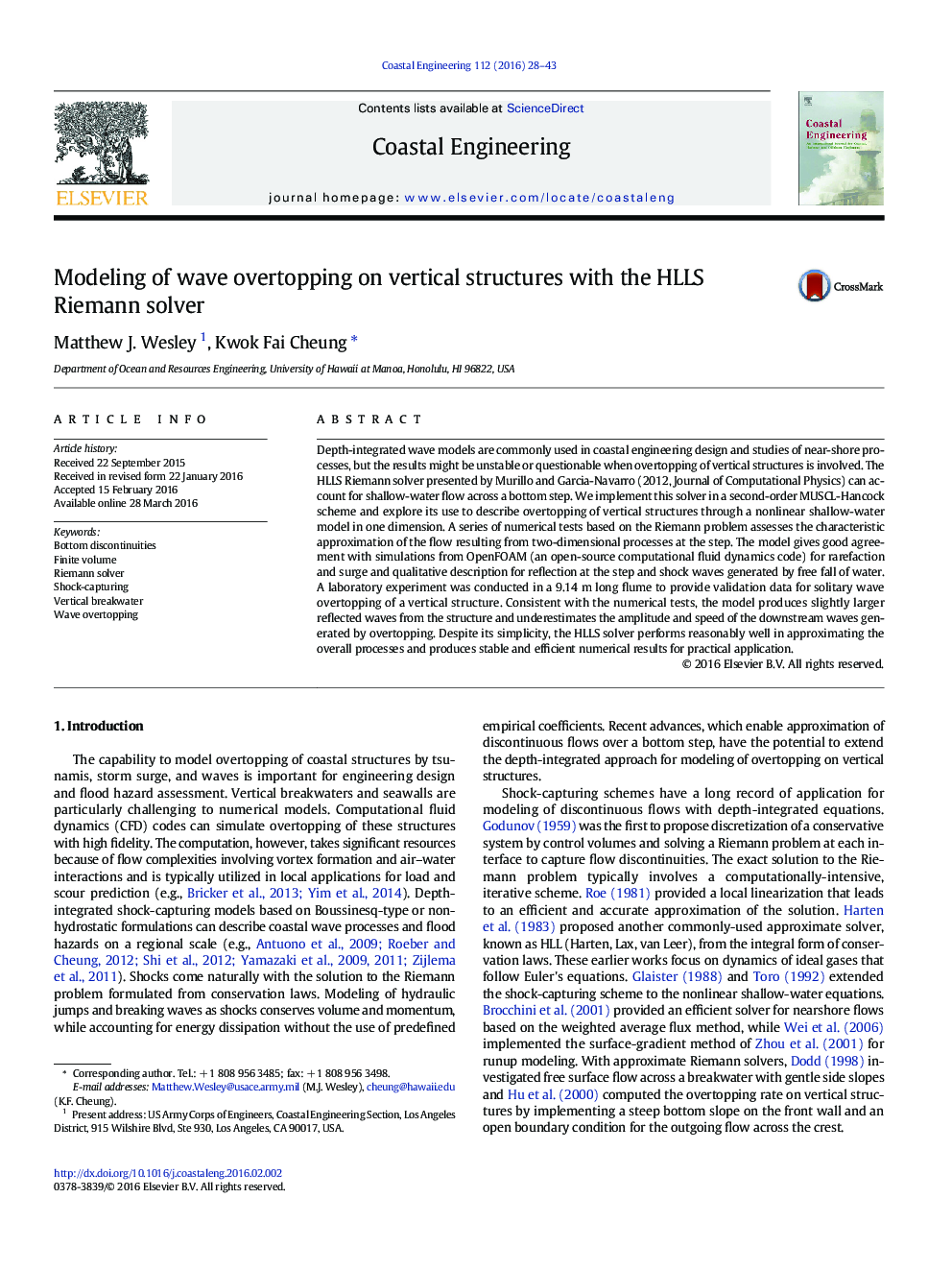| Article ID | Journal | Published Year | Pages | File Type |
|---|---|---|---|---|
| 1720560 | Coastal Engineering | 2016 | 16 Pages |
•Implementation of HLLS Riemann solver for overtopping•Validation of HLLS Riemann solver with OpenFOAM•Good agreement of nonlinear shallow-water model with laboratory experiment•An effective tool to describe free-surface flow over vertical structures
Depth-integrated wave models are commonly used in coastal engineering design and studies of near-shore processes, but the results might be unstable or questionable when overtopping of vertical structures is involved. The HLLS Riemann solver presented by Murillo and Garcia-Navarro (2012, Journal of Computational Physics) can account for shallow-water flow across a bottom step. We implement this solver in a second-order MUSCL-Hancock scheme and explore its use to describe overtopping of vertical structures through a nonlinear shallow-water model in one dimension. A series of numerical tests based on the Riemann problem assesses the characteristic approximation of the flow resulting from two-dimensional processes at the step. The model gives good agreement with simulations from OpenFOAM (an open-source computational fluid dynamics code) for rarefaction and surge and qualitative description for reflection at the step and shock waves generated by free fall of water. A laboratory experiment was conducted in a 9.14 m long flume to provide validation data for solitary wave overtopping of a vertical structure. Consistent with the numerical tests, the model produces slightly larger reflected waves from the structure and underestimates the amplitude and speed of the downstream waves generated by overtopping. Despite its simplicity, the HLLS solver performs reasonably well in approximating the overall processes and produces stable and efficient numerical results for practical application.
